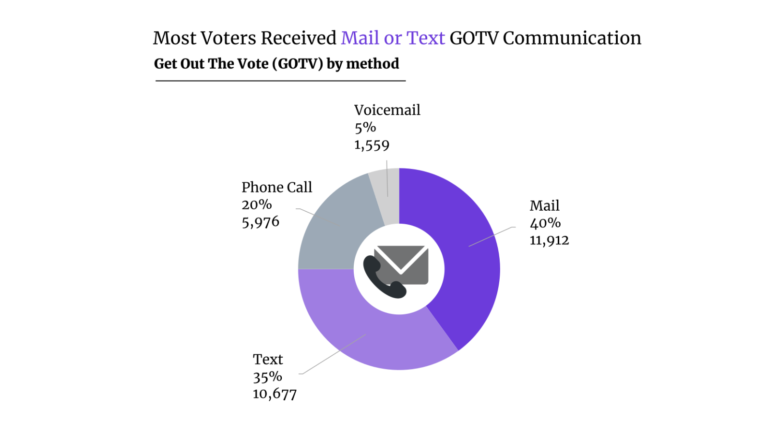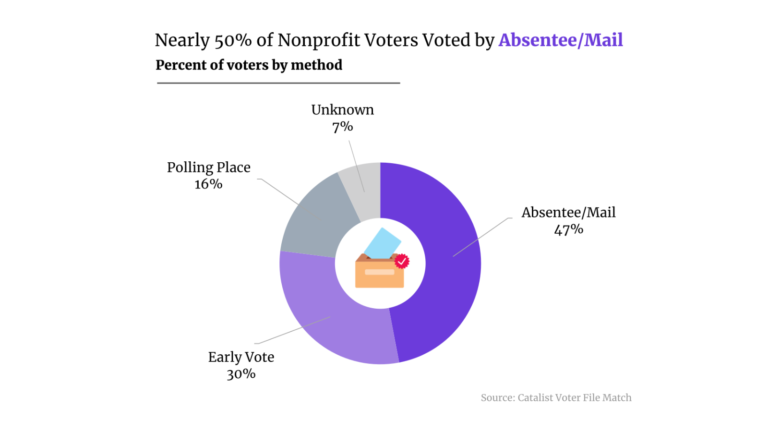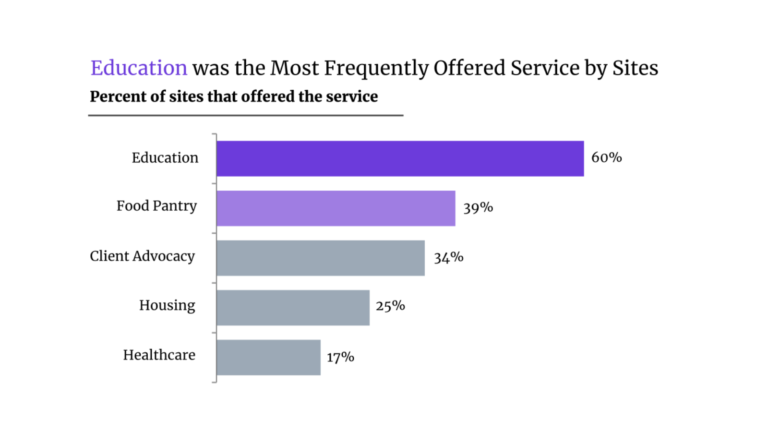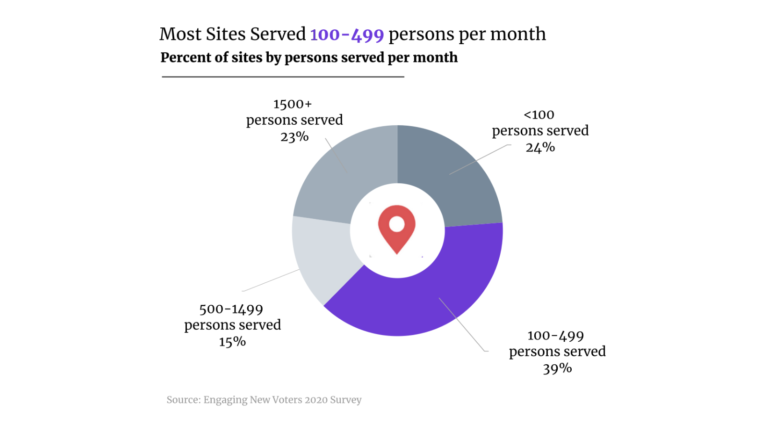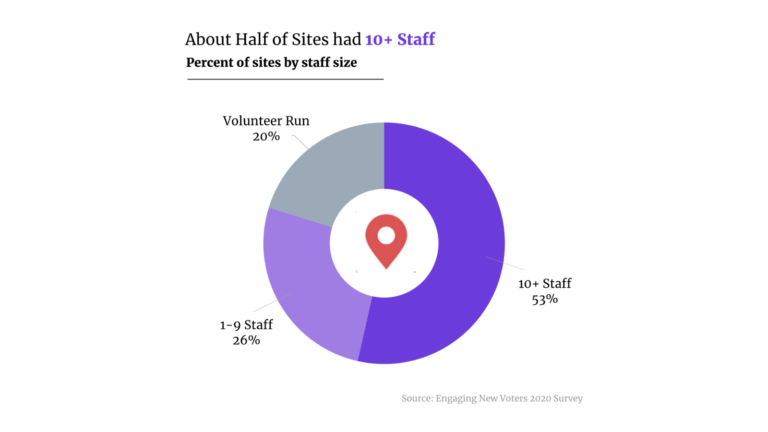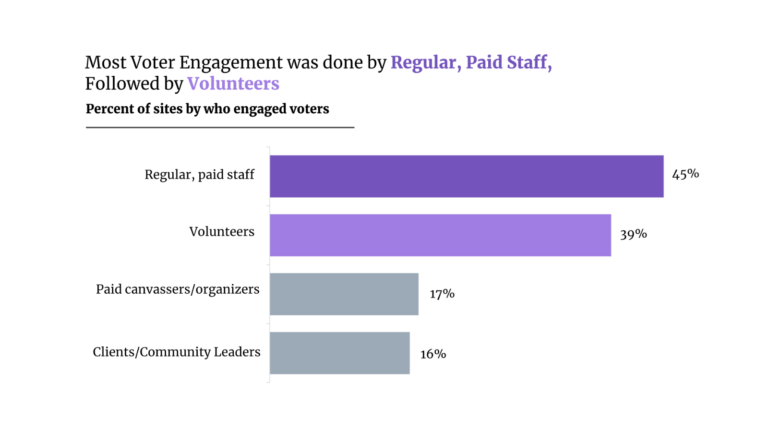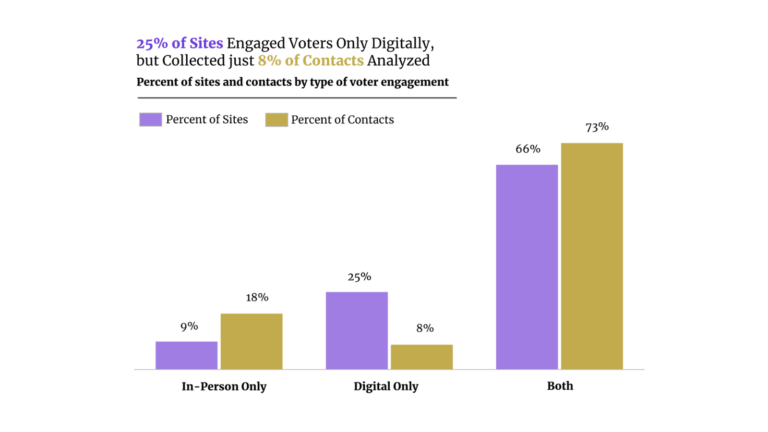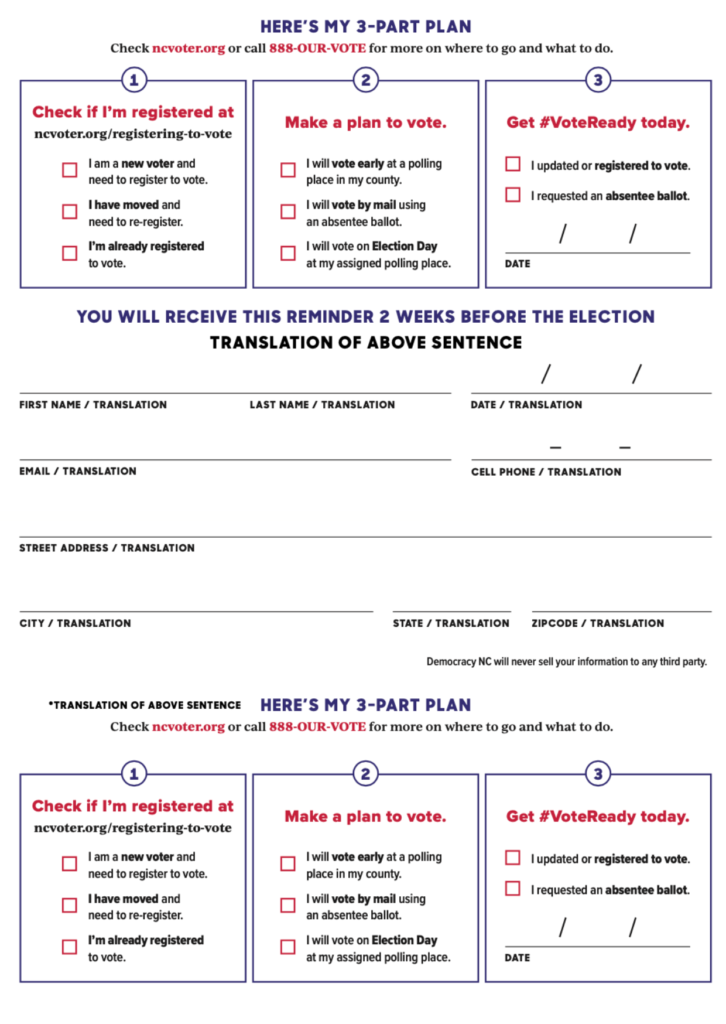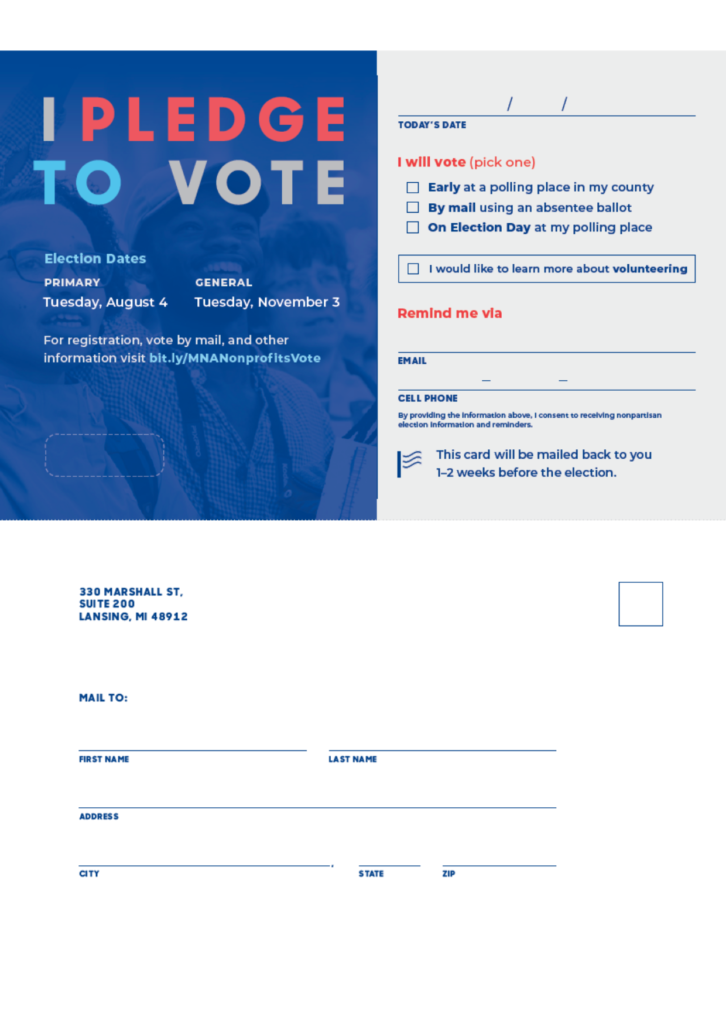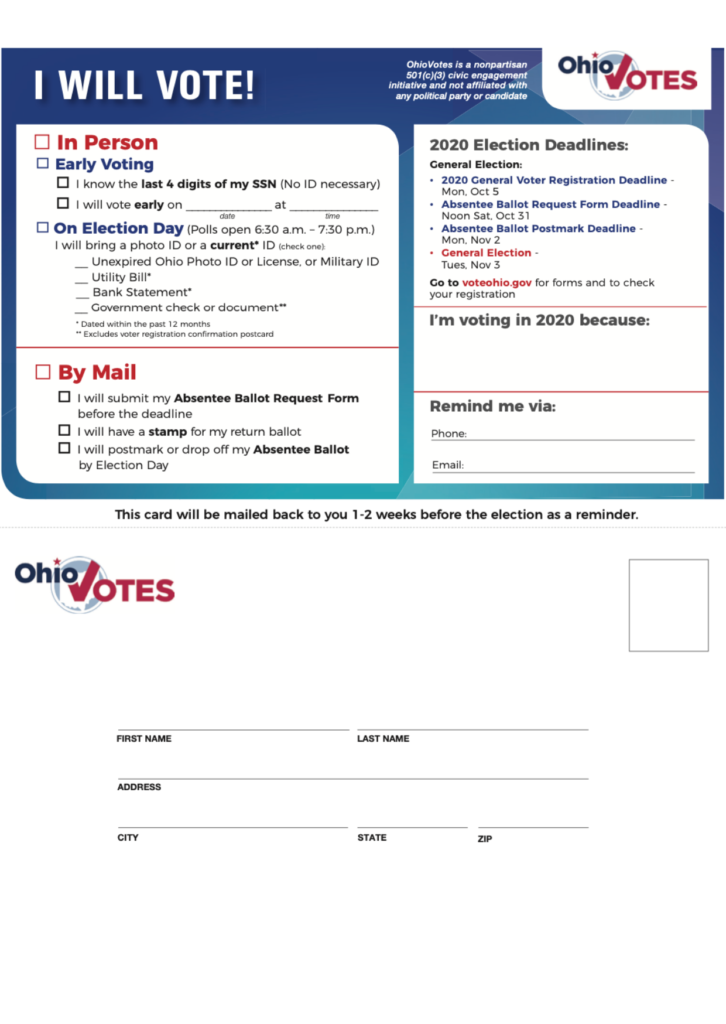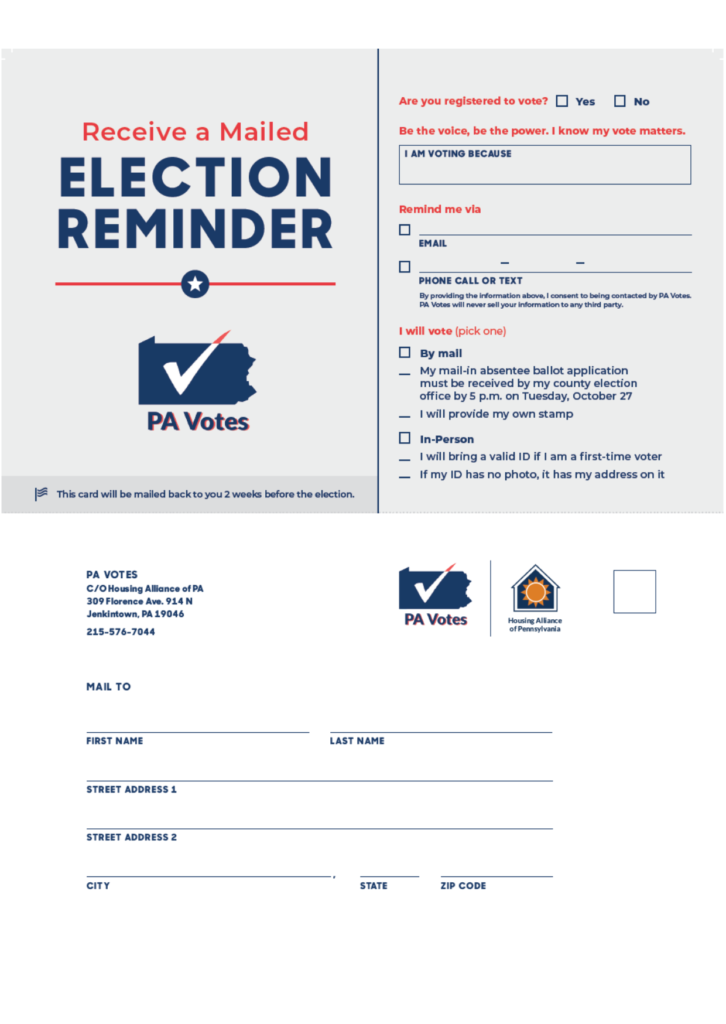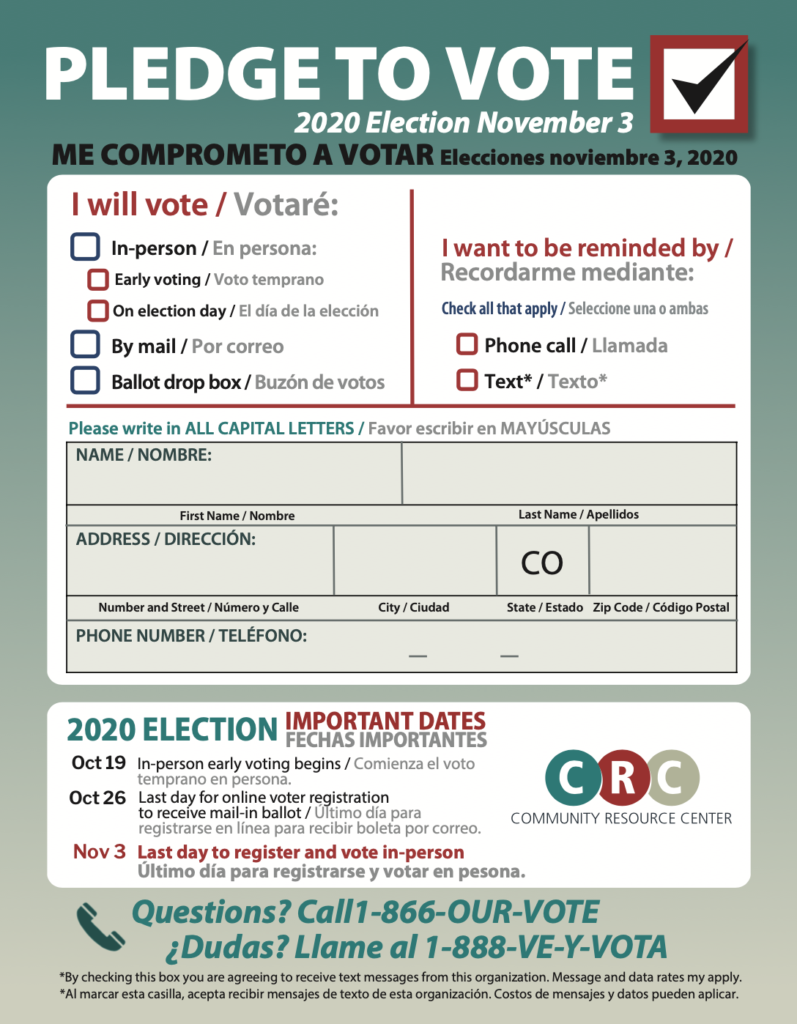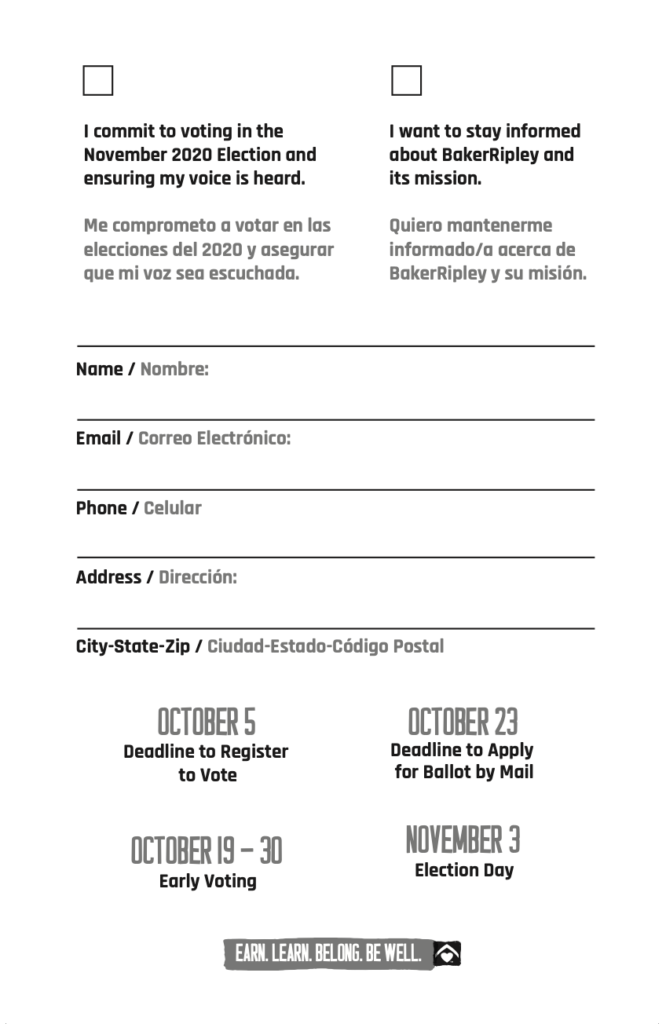
Practitioner’s Report
Nonprofit VOTE’s field program has two primary purposes. The first is narrowing turnout gaps by engaging thousands of voters through nonprofit organizations. We’ve demonstrated those positive impacts in the main findings of the report. Our other purpose is uncovering best practices for nonprofit voter engagement, particularly looking for approaches and tools that integrate well into existing activities and are highly effective for both the voters we seek to target as well as the nonprofits who engage them. Want to turn what you’ve learned into action? Click to let us know more about your organization here.
In this Practitioner’s Report, you’ll find:
Additional data and findings from voter contact analysis and surveys
Descriptions of methods used to collect voter contact information
Our roadmap for developing state-based infrastructure
More Data from the 2020 Program:
How did “Nonprofit Voters” make it to the polls?
Most voters engaged by sites received some form of Get Out the Vote (GOTV) outreach. GOTV messages were customized by state to include relevant deadlines and links. They also included personalized reminders based on each contact’s indicated voting plan (see pledge cards).
Nonprofit Site “Demographics”
We launched a survey to sites in Colorado, Michigan, Ohio, North Carolina, and Pennsylvania to better understand their experiences with implementing voter engagement. Just over 100 of the sites completed the survey (68%), and they collectively were the source of 5,295 voter contacts analyzed.
Services, staff size, and number of individuals served
We provided sites with a list of service types and asked them to select each service they offer. Note that percentages in the bar graph do not add to 100% because this was a check-all-that-apply question. Percentages are calculated out of the total number of surveyed sites that did or did not select that option.
Nonprofit Distribution: How did nonprofits reach voters?
Additional Findings and Questions
We hesitate to draw conclusions about which types of services, missions, or outreach styles work best to engage voters given the small sample size of surveyed nonprofit sites. However, the data indicated a few trends that future research could explore.
When matching nonprofit voters’ turnout to the services offered by the sites that engaged them, we found some services correlated with higher turnout boosts. Sites that selected “client advocacy” saw a 6 p.p. boost among their voters, and those that selected “education” saw a 5 p.p. boost. Sites that selected housing, food/hunger relief, or healthcare were also significantly more likely to reach the lowest propensity voters (1.3x, 1.9x, and 1.2x, respectively).
When matched by mission, sites that identified childcare/after school/education as their mission saw a 14 p.p. turnout boost among voters they engaged over comparable ones.
When we matched turnout with experience level, we found that the nonprofit voters engaged by sites implementing voter engagement for the first time had an 11pp boost over comparable voters. Sites that engaged voters during most years were 3 times more likely to reach 18-24 year-olds.
Further areas for inquiry
In future research, we’d like to explore two themes related to nonprofit voter engagement.
The first is measuring for efficacy. Data from 2020 and previous cycles of the program demonstrate the positive impact this engagement has on voters but is it possible to target strategies and investments to maximize impact? We wonder:
- Do commonalities exist between sites (such as mission or services offered) that correlate with engaging more contacts, the demographics of voters reached, or the turnout boost among voters?
- Does the introduction of hybrid engagement via tablets and digital portals have an impact on these metrics?
- What is the impact of voter education in increasing turnout? What information are voters most in need of and how should it be communicated?
The second is gauging longevity and scalability. How enduring is the impact of this program on voters and participating sites?
- VOTERS: Does engagement during a single cycle impact future voting behavior? Are voters who are engaged by nonprofits encouraging others in their network to also vote? What is the potential long-term impact of nonprofit engagement on neighborhoods and communities in regards to turnout?
- NONPROFIT SITES: Do sites continue voter engagement work after the conclusion of our field program operations? What is needed to further integrate voter engagement into their programs and services? At what point is voter engagement so embedded that minimal outside support is needed?
- ANCHORS: How do we sustain state-based infrastructure for voter engagement by nonprofits? What is needed to expand?
Methods for Collecting Voter Contacts:
Voter registration and mail ballot requests
1-in-4 eligible voters are not registered, which is the first barrier to participation. Prior to the pandemic, roughly 75% of registrations took place in person, with DMVs accounting for nearly half of all registrations. Many voters served by nonprofits may not have a driver’s license, while others who move frequently may not always update their addresses, resulting in out-of-date registrations. Even when they do have a current drivers license, many DMVs don’t make the option to register obvious, much less automatic.
All sites incorporated voter registration as a “first ask” using paper registration forms as well as online portals. Some sites also used digital portals to ask voters to check their registration status.
It’s important to have a “second ask.” Depending on the population you engage with, a significant share of the people you approach will already be registered to vote at their current address, so have a “second ask” ready. Our sites did so using pledge-to-vote cards and/or mail ballot requests.
Approximately 5% of the contacts collected by sites were mail/absentee ballot requests. Laws regarding who is allowed to vote by mail and whether nonprofits may assist with ballot request distribution and collection vary across states.
Pledge-to-Vote Cards
Why Use a Pledge-to-Vote Card?
- Use as a second ask when voters are already registered to still encourage them to vote
- Prompt voters to think through their plan to cast a ballot
- Collect contact information to build a list of voters for GOTV follow up
- Highlight key dates and information for staff or volunteers to reference
Unlike voter registration, which is defined by states, nonprofits have the flexibility to customize these cards for maximum effectiveness!
Checklist for Developing a Pledge-to-Vote Card
Card Design
- Simplicity: Keep voters focused on what is important by using consistent colors, fonts, and design elements.
- Branding: Add your organization’s logo and branding to reinforces trust.
- Translations: If you work with voters that communicate in languages other than English, either add translations next to the English (for ease of quantity distribution) or create a separate card (if space is an issue).
- Receipt or Return: Create a companion informational card that the voter takes with them or design the card so you can mail it back to the voter before election day.
Sections of the Card Voters Fill Out
- Contact Information: Ask voters for their full name, phone number, and address for GOTV follow up by phone, text, or mail.
- Commitment: Use framing like “Why I Pledge to Vote…” or “I’m voting because…” in addition to prompting voters to identify their own reasons for wanting to vote.
- Are You Vote Ready?: Ask voters to check their registration, choose their method of casting a ballot, and make a plan for voting (by mail or in-person, early or on election day).
Information to add to the card
- Important Dates: State and local election days, early voting periods, and deadlines for voter registration and mail ballot requests.
- Relevant Links: Provide the URL for a website where voters can check or update their registration and find their polling place. Use your state’s voter portal, Vote411.org, or CanIVote.org. (Optional: Add a QR code)
- Election Protection: State or national voter hotlines like 1-866-OUR-VOTE (1-866-687-8683). See 866ourvote.org for other language hotlines.
- Build Trust: Add language indicating that voters’ information will only be used for nonpartisan election reminders and never sold to a third party. You can also include opt-in language (“By providing information I consent to…”).
See a sampling of our 2020 anchor pledge-to-vote cards for inspiration and examples
Roadmap for Establishing a Voter Engagement Network
Nonprofit VOTE taps state and local organizations to coordinate voter engagement programs that will reach high-potential voters. Voter engagement networks have a positive impact on voter turnout in their communities, but the anchors and sites also report direct benefits, including deepened relationships, staff motivation, impact on advocacy work, and gratitude from the voters they serve.
STEP 1: Identify the Anchor
Anchors recruit and work with sites, tracking their progress, troubleshooting, and helping them reach goals. Anchors share important traits: Nonpartisanship, relationships with nonprofits, and capacity to support sites.
Who Can Be an Anchor Organization?
| Larger, Multi-service Nonprofit Organizations: These anchors organize an internal network of committed locations to offer voter engagement alongside other services. |
| Nonprofit Associations, Coalitions, & Funders: As anchors, these groups leverage their existing relationships with nonprofits to develop civic infrastructure in their communities. |
| Civic Engagement Organizations: These anchors can provide a high level of support to sites, but their success depends on the trust they build with nonprofits within their respective networks. |
In-house voter engagement expertise is not a requirement to become an anchor. Instead, anchors can partner with us for technical assistance.
STEP 2: Recruit Sites
Sites are local nonprofits providing direct services to the community. Most anchors reach out to their existing partners and broader state networks. Use a brief application process to select sites.
What Should an Anchor Look for When Recruiting Sites?
| Broad Buy-In Around Voter Engagement 1) Supportive board and executive director 2) Motivated, responsive point person 3) Past history of civic engagement work |
| Robust opportunities for engaging voters: 1) Many face-to-face service offerings 2) Busy waiting room or easy-to-canvass residents 3) Well-attended events |
Avoid trust issues by building shared understandings and agreements with sites regarding data collection and linguistic/cultural competency.
Step 3: Develop Swag and Assets
Swag and assets make sites’ efforts more visible to voters and motivates the staff and volunteers doing engagement work. Digital assets help sites communicate virtually and use digital tools to enhance in-person activities (blended organizing).
What Types of Swag and Assets are Most Useful?
| Physical Swag 1) Pledge Cards & info for voters to takeaway 2) Buttons, stickers, and posters 3) PPE, like hand sanitizer, pens, and masks |
| Digital Assets: 1) Web portal to pledge and register voters 2) Social media assets 3) Sample posts and language |
Blended Organizing: The use of digital tools, such as state voter portals and links to online candidate guides, during in-person engagement. So people can register or pledge-to-vote on their phones, some anchors use QR-coded lanyard cards that link directly to their digital assets as a compliment to the face-to-face asks.
Step 4: Provide Training
Training is critical to ensure that everyone conducting voter engagement is effective, provides accurate information, and follows data protocols. Election officials, your local League of Women Voters, and Nonprofit VOTE can typically provide low or no-cost training to your organization.
What Makes a Voter Engagement Training Successful?
| The Right Topics: 1) How to fill out voter registration forms 2) Talking to voters 3) Staying Nonpartisan 4) Handling paperwork |
| The Right People: Program Staff Volunteers Skilled trainers Give a mini training to your board to get buy-in! |
Occasionally re-visit training topics to refresh people’s memories and give them more time to practice.
From here, the voter engagement network you build can begin its work and iterate on a yearly basis by adding sites, refining swag and assets, and innovating ways to reach voters.
